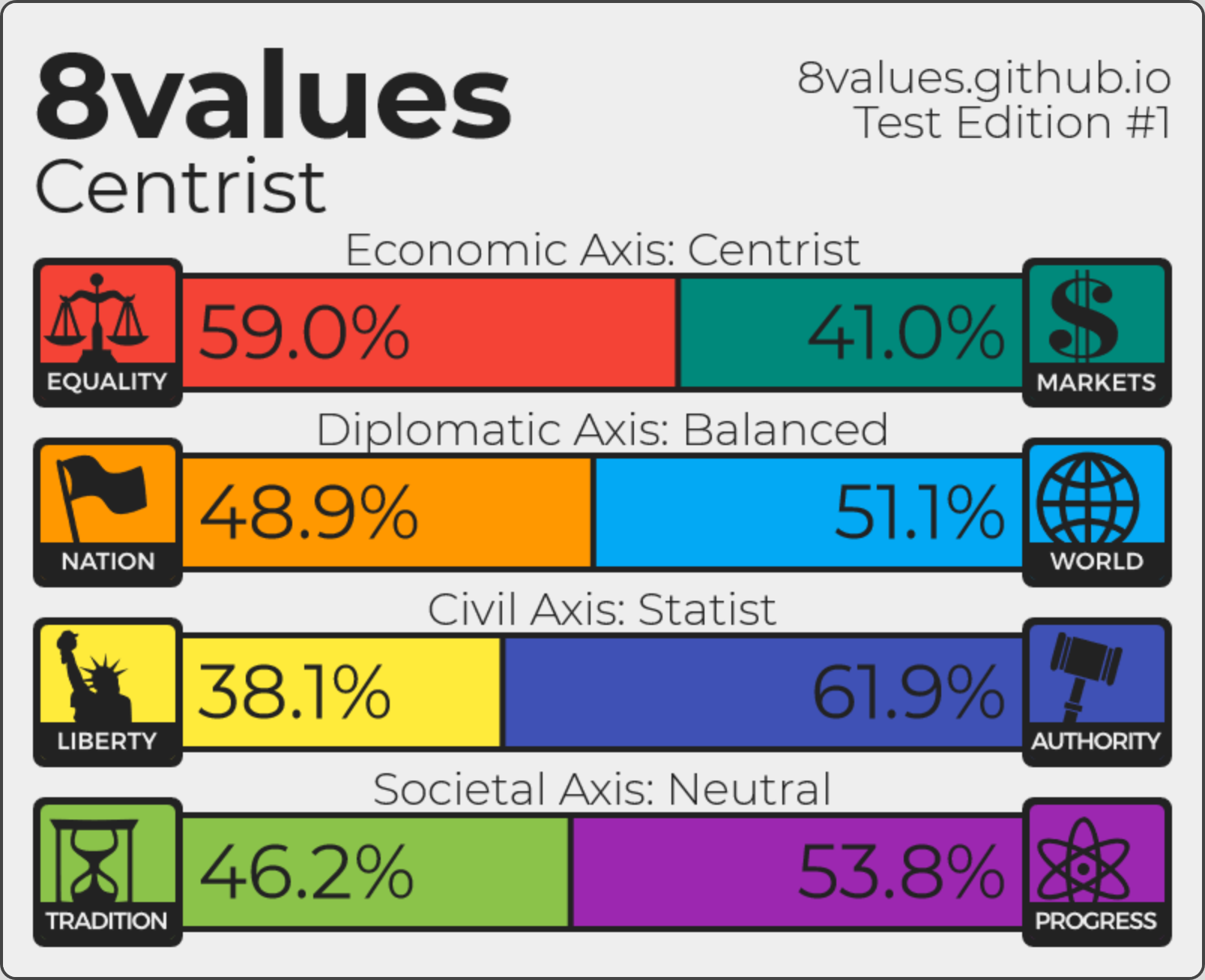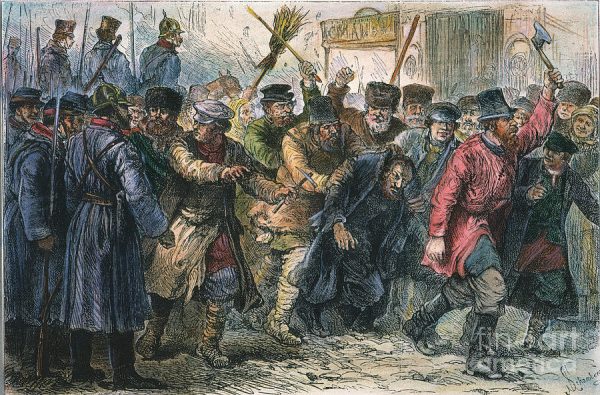The following is part of a larger series discussing the ongoing development of PoliTree, an attempted political-compass killer which has been way too long in the making. To find out more, visit the introduction.
The months of December and January were mostly dedicated to finishing up the results pages. As of today, only two results pages have to be done and I have already begun work on the next step in the process, which is creating the questions to filter from the leaves to the results respectively.
The methods of filtering vary depending on how many branches are contained in each respective leaf, but the overall format is the same. At first, I was doing logic-gates to filter; however, I scrapped that idea as the ordering of questions would simply introduce too much bias. Instead, I’ve decided to do it in terms of meters; each meter contains a principle which distinguishes the specific branch from the other ones within the leaf.
The core concept is similar to the meters present in 8Values, but the execution is very different, as you’ll see very soon.

The most basic implementation of this is on leaves with two branches, such as the Moderate leaf. Within the Moderate leaf, the two branches are Syncretic and Pluralist.
I started by asking myself about what fundamentally separates a syncretist from a pluralist. What I decided is that they are both varying approaches to reconciling ideas; the syncretist resolves differences in opinion by fusing elements of ideas while the pluralist believes in the mutual conflict of ideologies and interests in order to keep each other in check.
We’ll label our principles as Competition and Cooperation for the sake of simplicity. And this is where the inspiration from 8Values comes in; a set of ten binary questions will be asked, each contributing varying amounts to either Convergence or Coexistence, depending on their individual importance. For example, if I asked: “Are the best solutions typically found in the middle?”, that would give some points to the Cooperation but not to the Competition side of the meter.
And because we only have to filter between two, evaluating these results is as simple as comparing which one has the majority of points at the end.
The next level of complexity occurs if we have four branches on our leaf, such as what occurs in the Communist leaf. Within the Communist leaf, we have Autonomist, Councilist, Syndicalist, and Vanguardist as branches.
- Now that there is more than one, let us introduce the concept of matchups. Our meter system gives us the ability to evaluate one branch against the other, but we won’t be able to add any more into each comparison. We will have to break this down into one versus one.
- Since there is an even number of branches, we can make our first matchup a two versus two. We will need a shared characteristic for each pair however, as to fit it into the 1v1 nature of the matchup. These shared characteristics we will label Democratic and Organic respectively.
- We can do this because both the Syndicalist and the Vanguardist branches ascribe to democratic forms of organization while both the Councilist and Autonomist branches ascribe to organic forms of organization. Being able to know which the test-taker fits into eliminates half the field.
- Because half of four is two, we can simply use the same process we used for the two-branch for each remaining pair, to get our final result.
And finally, let us discuss what is by far the most complex implementation, the three-branch. The reason I made it more complex is because we deal with an issue known as the Condorcet Paradox. In simple terms, it just means that when applying a matchup method to a field of three candidates, there is a specific scenario in which no winner can be determined. Due to the way we’re applying the matchup method, this scenario is a lot more likely to occur than it normally should be, so we will have to find a way around this.
To demonstrate this, I’ll use the Anarchist leaf, which happens to have three branches (Pacifist, Intersectionalist, and Communalist).
- I begin by deciding that we will need every combination of matchups between each of the three candidates for the results to be evaluated fairly. The required combinations and their principles are as follows:
Pacifist v. Intersectionalist — Clemency/Retribution
Pacifist v. Communalist — Nonviolence/Insurrection
Communalist v. Intersectionalist — Majority/Minority
In the situations where a candidate wins twice, the dilemma is quickly solved; however, what happens if each one wins once? A possible fallback could be to check margins of victory: perhaps one victory is stronger than the other. However, that would introduce another issue, which is: what if the margins of victory are equal? We’ll end up back where we started.
So, instead I have devised a definitive fallback, known as disqualifying matchups. To explain, let assume our winning principles are as follows: Clemency, Insurrection, and Minority. Insurrection as a principle is inherently antithetical to Pacifism, outright disqualifying it from being a possibility. This leaves Communalist and Intersectionalist remaining, and we have the Majority/Minority matchup to tell us which one wins. In this case, the “tie” would result in Intersectionalist being the final result.
Blogger and software engineer. I write on tech, politics, and theology.
